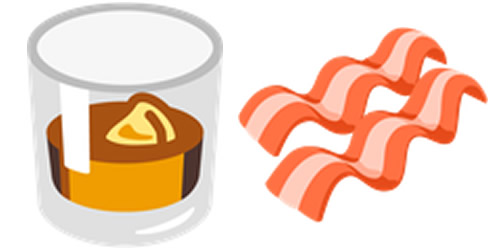
…namely, Whisk(e)y and bacon. Now my communications needs have been met — I just have to wait for the over-the-air update to come out for my Moto G4.

…namely, Whisk(e)y and bacon. Now my communications needs have been met — I just have to wait for the over-the-air update to come out for my Moto G4.
Click the diagram to see it at full size.
In the previous article in this series, we looked at three key structs for date and time programming in Swift:
Date represents a single point in time, using a format that can easily be translated into just about any calendar and time-reckoning system: a number of seconds relative to the start of the Third Millennium (January 1, 2001, 00:00:00 UTC).DateComponents specifies time units like year, month, day, hour, minute, and more to represent either a point in time or a duration of time.Calendar provides a context for Dates, and converts Dates to DateComponents and DateComponents to Dates.These structs all deal with the internal representation of dates and times. In this article, we’ll look at the DateFormatter class, which allows us to deal with their external representation — by converting Dates into Strings, and properly-formatted Strings into Dates.
Date into a String, part 1: Just the dateStart a new playground and enter the following code, which gives us a Date that we can format — the day when Alexander Graham Bell made the very first phone call:
// The user's calendar incorporates the user's locale and // time zone settings, which means it's the one you'll use // most often. let userCalendar = Calendar.current // On March 10, 1876, Alexander Graham Bell // made the first land line phone call. var firstLandPhoneCallDateComponents = DateComponents() firstLandPhoneCallDateComponents.year = 1876 firstLandPhoneCallDateComponents.month = 3 firstLandPhoneCallDateComponents.day = 10 let firstLandPhoneCallDate = userCalendar.date(from: firstLandPhoneCallDateComponents)! // The value "Mar 10, 1876, 12:00 AM" should appear in the // playground sidebar. firstLandPhoneCallDate
Now let’s try turning this date into a string with a DateFormatter:
let myFormatter = DateFormatter() myFormatter.string(from: firstLandPhoneCallDate) // What gives?
You may be surprised that the result is an empty String. This can be fixed by specifying a dateStyle:
let myFormatter = DateFormatter() myFormatter.string(from: firstLandPhoneCallDate) // What gives? myFormatter.dateStyle = .short myFormatter.string(from: firstLandPhoneCallDate) // "3/10/76"
Let’s try the other dateStyles:
let myFormatter = DateFormatter() myFormatter.string(from: firstLandPhoneCallDate) // What gives? myFormatter.dateStyle = .short myFormatter.string(from: firstLandPhoneCallDate) // "3/10/76" myFormatter.dateStyle = .medium myFormatter.string(from: firstLandPhoneCallDate) // "Mar 10, 1876" myFormatter.dateStyle = .long myFormatter.string(from: firstLandPhoneCallDate) // "March 10, 1876" myFormatter.dateStyle = .full myFormatter.string(from: firstLandPhoneCallDate) // "Friday, March 10, 1876" myFormatter.dateStyle = .none myFormatter.string(from: firstLandPhoneCallDate) // ""
Why would there be a dateStyle called .none? I’ll explain in a little bit.
Date into a String, part 2: A date and a time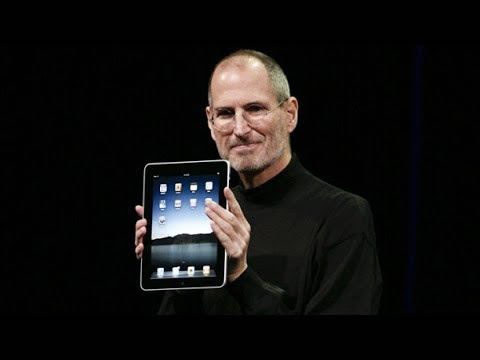
Let’s work with an event for which we know both the date and time: the “Stevenote” where the iPad was introduced, which started on January 27, 2010, at 10:00 a.m. Pacific Time (UTC-8). We’ll define this as a Date by adding the following code:
// (Previous code goes here) // The Stevenote where the iPad was introduced took place on // January 27, 2010 at 10:00 a.m. Pacific time. var iPadStevenoteDateComponents = DateComponents() iPadStevenoteDateComponents.year = 2010 iPadStevenoteDateComponents.month = 1 iPadStevenoteDateComponents.day = 27 iPadStevenoteDateComponents.hour = 10 iPadStevenoteDateComponents.minute = 0 iPadStevenoteDateComponents.timeZone = TimeZone(identifier: "America/Los_Angeles") let iPadStevenoteDate = userCalendar.date(from: iPadStevenoteDateComponents)!
Now that we have a date and time, let’s format it using the dateStyle and timeStyle properties:
// (Previous code goes here) myFormatter.dateStyle = .short myFormatter.timeStyle = .short myFormatter.string(from: iPadStevenoteDate) // "1/27/10, 1:00 PM" myFormatter.dateStyle = .medium myFormatter.timeStyle = .medium myFormatter.string(from: iPadStevenoteDate) // "Jan 27, 2010, 1:00:00 PM" myFormatter.dateStyle = .long myFormatter.timeStyle = .long myFormatter.string(from: iPadStevenoteDate) // "January 27, 2010 at 1:00:00 myFormatter.dateStyle = .full myFormatter.timeStyle = .full myFormatter.string(from: iPadStevenoteDate) // "Wednesday, January 27, 2010 at 1:00:00 PM Eastern Standard Time"
Now that we’re working with a date and time, let’s see what the .none style is for:
// (Previous code goes here) // Show only the time myFormatter.dateStyle = .none myFormatter.timeStyle = .full myFormatter.string(from: iPadStevenoteDate) // "1:00:00 PM Eastern Standard Time" // Show only the date myFormatter.dateStyle = .full myFormatter.timeStyle = .none myFormatter.string(from: iPadStevenoteDate) // "Wednesday, January 27, 2010"
Remember that in Swift, the Date struct represents a single point in time, which has both a date and a time. The .none style for DateFormatter‘s dateStyle and timeStyle properties allows us to create a String representation of a Date that shows only its date or time part.
Date into a String, part 3: Custom date/time formats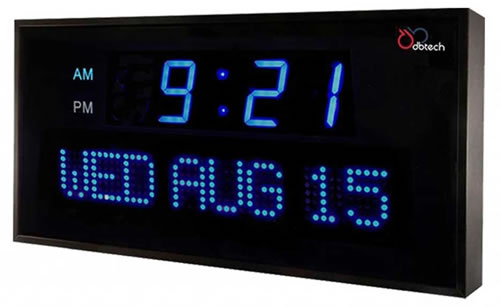
Before we begin working with custom date/time formats, I should point out that if you need to display a Date as a String to the user, it’s best if you use Swift’s built-in dateStyle and timeStyle values. They display dates and times properly, according to the user’s settings, which include country and language. You’d be surprised how date formats differ from culture to culture, and it’s better to let Swift do the formatting work.
However, there are times when you need to format dates and times in a specific way that doesn’t match the styles provided by DateFormatter‘s dateStyle and timeStyle properties, such as when dealing with certain APIs. That’s where DateFormatter‘s dateFormat property comes in handy:
// (Previous code goes here) // Setting the locale to POSIX ensures that the user's locale // won't be used to format the Date. myFormatter.locale = Locale(identifier: "en_US_POSIX") // DateFormatter's format string uses the date format specifiers // spelled out in Unicode Technical Standard #35 (located at // http://www.unicode.org/reports/tr35/tr35-25.html#Date_Format_Patterns) myFormatter.dateFormat = "y-MM-dd" myFormatter.string(from: iPadStevenoteDate) // "2010-01-27"
You can use the date format specifiers listed in Appendix F of the Unicode Technical Standard #35 to define the formatting String for the dateFormat property. Here are some examples:
// (Previous code goes here) myFormatter.dateFormat = "'Year: 'y' Month: 'M' Day: 'd" myFormatter.string(from: iPadStevenoteDate) // "Year: 2010 Month: 1 Day: 27" myFormatter.dateFormat = "MM/dd/yy" myFormatter.string(from: iPadStevenoteDate) // "01/27/10" myFormatter.dateFormat = "MMM dd, yyyy" myFormatter.string(from: iPadStevenoteDate) // "Jan 27, 2010" myFormatter.dateFormat = "E MMM dd, yyyy" myFormatter.string(from: iPadStevenoteDate) // "Wed Jan 27, 2010" myFormatter.dateFormat = "EEEE, MMMM dd, yyyy' at 'h:mm a." myFormatter.string(from: iPadStevenoteDate) // "Wednesday, January 27, 2010 at 1:00 PM." myFormatter.dateFormat = "EEEE, MMMM dd, yyyy' at 'h:mm a zzzz." myFormatter.string(from: iPadStevenoteDate) // "Wednesday, January 27, 2010 at 1:00 PM Eastern Standard Time."
String into a Date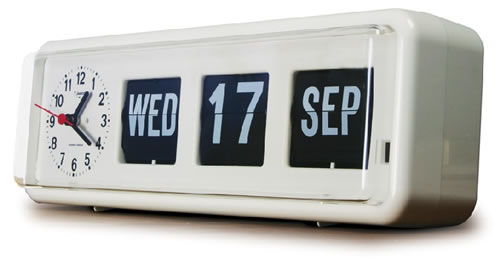
DateFormatter works the other way — just as it can convert Dates to Strings, it can also convert Strings to Dates. By setting its dateFormat to the format of the String it should expect, you can use its date(from:) method to convert a String into a Date:
// (Previous code goes here) myFormatter.dateFormat = "yyyy/MM/dd hh:mm Z" // Here's a date in the format specified by the string // assigned to dateFormat: let newDate1 = myFormatter.date(from: "2015/03/07 11:00 -0500") // Date - "Mar 7, 2015, 11:00 AM" // And here's the same date, but in a different format: let newDate2 = myFormatter.date(from: "Mar 7, 2015, 11:00:00 AM") // nil
Let’s change the dateFormat string and try it again:
// (Previous code goes here) // Let's change the date format strings and try // date(from:) with the same two strings: myFormatter.dateFormat = "MMM d, yyyy, hh:mm a zz" myFormatter.date(from: "2015/03/07 11:00 -0500") // nil myFormatter.date(from: "Mar 7, 2015, 11:00 AM EST") // "Mar 7, 2015, 11:00 AM"
Here’s a playground containing all the code we just worked with:
import UIKit // Let’s convert a Date into a String, part 1: Just the date // ========================================================= // The user's calendar incorporates the user's locale and // time zone settings, which means it's the one you'll use // most often. let userCalendar = Calendar.current // On March 10, 1876, Alexander Graham Bell // made the first land line phone call. var firstLandPhoneCallDateComponents = DateComponents() firstLandPhoneCallDateComponents.year = 1876 firstLandPhoneCallDateComponents.month = 3 firstLandPhoneCallDateComponents.day = 10 let firstLandPhoneCallDate = userCalendar.date(from: firstLandPhoneCallDateComponents)! // The value "Mar 10, 1876, 12:00 AM" should appear in the // playground sidebar. firstLandPhoneCallDate let myFormatter = DateFormatter() myFormatter.string(from: firstLandPhoneCallDate) // What gives? myFormatter.dateStyle = .short myFormatter.string(from: firstLandPhoneCallDate) // "3/10/76" myFormatter.dateStyle = .medium myFormatter.string(from: firstLandPhoneCallDate) // "Mar 10, 1876" myFormatter.dateStyle = .long myFormatter.string(from: firstLandPhoneCallDate) // "March 10, 1876" myFormatter.dateStyle = .full myFormatter.string(from: firstLandPhoneCallDate) // "Friday, March 10, 1876" myFormatter.dateStyle = .none myFormatter.string(from: firstLandPhoneCallDate) // "" // Let’s convert a Date into a String, part 2: A date and a time // ============================================================= // The Stevenote where the iPad was introduced took place on // January 27, 2010 at 10:00 a.m. Pacific time. var iPadStevenoteDateComponents = DateComponents() iPadStevenoteDateComponents.year = 2010 iPadStevenoteDateComponents.month = 1 iPadStevenoteDateComponents.day = 27 iPadStevenoteDateComponents.hour = 10 iPadStevenoteDateComponents.minute = 0 iPadStevenoteDateComponents.timeZone = TimeZone(identifier: "America/Los_Angeles") let iPadStevenoteDate = userCalendar.date(from: iPadStevenoteDateComponents)! myFormatter.dateStyle = .short myFormatter.timeStyle = .short myFormatter.string(from: iPadStevenoteDate) // "1/27/10, 1:00 PM" myFormatter.dateStyle = .medium myFormatter.timeStyle = .medium myFormatter.string(from: iPadStevenoteDate) // "Jan 27, 2010, 1:00:00 PM" myFormatter.dateStyle = .long myFormatter.timeStyle = .long myFormatter.string(from: iPadStevenoteDate) // "January 27, 2010 at 1:00:00 myFormatter.dateStyle = .full myFormatter.timeStyle = .full myFormatter.string(from: iPadStevenoteDate) // "Wednesday, January 27, 2010 at 1:00:00 PM Eastern Standard Time" // Show only the time myFormatter.dateStyle = .none myFormatter.timeStyle = .full myFormatter.string(from: iPadStevenoteDate) // "1:00:00 PM Eastern Standard Time" // Show only the date myFormatter.dateStyle = .full myFormatter.timeStyle = .none myFormatter.string(from: iPadStevenoteDate) // "Wednesday, January 27, 2010" // Let’s convert a Date into a String, part 3: Custom date/time formats // ==================================================================== // Setting the locale to POSIX ensures that the user's locale // won't be used to format the Date. myFormatter.locale = Locale(identifier: "en_US_POSIX") // DateFormatter's format string uses the date format specifiers // spelled out in Unicode Technical Standard #35 (located at // http://www.unicode.org/reports/tr35/tr35-25.html#Date_Format_Patterns) myFormatter.dateFormat = "y-MM-dd" myFormatter.string(from: iPadStevenoteDate) // "2010-01-27" myFormatter.dateFormat = "'Year: 'y' Month: 'M' Day: 'd" myFormatter.string(from: iPadStevenoteDate) // "Year: 2010 Month: 1 Day: 27" myFormatter.dateFormat = "MM/dd/yy" myFormatter.string(from: iPadStevenoteDate) // "01/27/10" myFormatter.dateFormat = "MMM dd, yyyy" myFormatter.string(from: iPadStevenoteDate) // "Jan 27, 2010" myFormatter.dateFormat = "E MMM dd, yyyy" myFormatter.string(from: iPadStevenoteDate) // "Wed Jan 27, 2010" myFormatter.dateFormat = "EEEE, MMMM dd, yyyy' at 'h:mm a." myFormatter.string(from: iPadStevenoteDate) // "Wednesday, January 27, 2010 at 1:00 PM." myFormatter.dateFormat = "EEEE, MMMM dd, yyyy' at 'h:mm a zzzz." myFormatter.string(from: iPadStevenoteDate) // "Wednesday, January 27, 2010 at 1:00 PM Eastern Standard Time." // Let’s convert a String into a Date // ================================== myFormatter.dateFormat = "yyyy/MM/dd hh:mm Z" // Here's a date in the format specified by the string // assigned to dateFormat: myFormatter.date(from: "2015/03/07 11:00 -0500") // Date - "Mar 7, 2015, 11:00 AM" // And here's the same date, but in a different format: myFormatter.date(from: "Mar 7, 2015, 11:00 AM EST") // nil // Let's change the date format strings and try // date(from:) with the same two strings: myFormatter.dateFormat = "MMM d, yyyy, hh:mm a zz" myFormatter.date(from: "2015/03/07 11:00 -0500") // nil myFormatter.date(from: "Mar 7, 2015, 11:00 AM EST") // "Mar 7, 2015, 11:00 AM"
In the next installment, we’ll look at date calculations.
With over 25 million users playing every day, and downloads and active users surpassing even Twitter and Tinder, Pokémon Go is turning out to be one of the most popular mobile applications of all time. According to Data Security Law Blog, it also highlights the risks in BYOD (Bring Your Own Device) policies.
With a BYOD device that has Pokémon Go installed, the risks come from the security — or more accurately, insecurity — of the Pokémon Go app itself. Earlier versions of the game gave the app full access to the user’s complete Google account profile and related information, including Google-accessible email accounts and search history. While it’s not likely that this now-fixed security hole led to any breaches, it’s a prime example of how a suddenly popular app running on a BYOD device can lead to trouble.
All this is still new territory — the smartphone as we currently know it won’t even turn 10 until next year — and businesses would do well to watch the effects of apps like Pokémon Go, and alter their mobile policies accordingly.
As we’ve observed before, mobile devices are more personal than even “personal” computers. People don’t want to part with them, which is why they prefer to bring them to work — and use them for work. This attachment to our mobile devices, for which we’re finding more and more uses, is why at least two-thirds of employees are using their own mobile devices in the course of doing their jobs.
Tech.co has a brief but useful article that summarizes the big pros and cons of BYOD, explains what the general best practices are, and explains why training employees is key to a successful BYOD implementation. If your organization is considering or just starting with a BYOD program, it would be worth your time to read this article.
In a recent entry on their blog, Heimdal Security provide these BYOD statistics:
In the same article, they list eleven common sense (which is uncommon) steps for BYOD users to secure the personal mobile devices they use for work. As they say, “security is each user’s own business”.
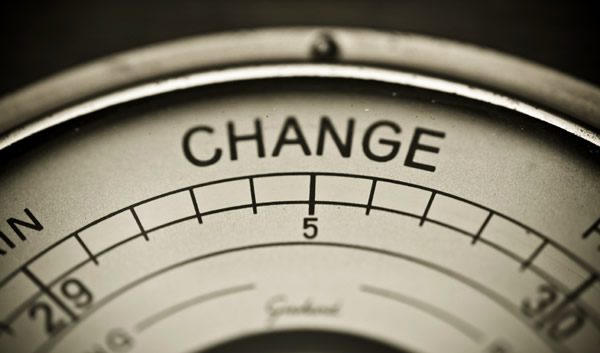
It’s been a couple of months since the last Tampa iOS Meetup, and with summer drawing to a close and iOS 10 coming very soon, it’s time to kick things back into high gear. It’s going to be an interesting fall, what with the coming changes…

 The first change is that Angela, who originally put this Meetup group together, landed a job in San Francisco and moved there. I want to congratulate her on seizing this opportunity — I did the same thing during the dot-com bubble of the late ’90s — and wish her the very best in her adventures in the other Bay Area. I’d also like to thank her for all the work she’s done for this Meetup group, which wouldn’t even exist without the initial spark that she provided.
The first change is that Angela, who originally put this Meetup group together, landed a job in San Francisco and moved there. I want to congratulate her on seizing this opportunity — I did the same thing during the dot-com bubble of the late ’90s — and wish her the very best in her adventures in the other Bay Area. I’d also like to thank her for all the work she’s done for this Meetup group, which wouldn’t even exist without the initial spark that she provided.
As for me, I plan to stick around, and will continue in my role as this Meetup group’s organizer, lead speaker, and accordion player.
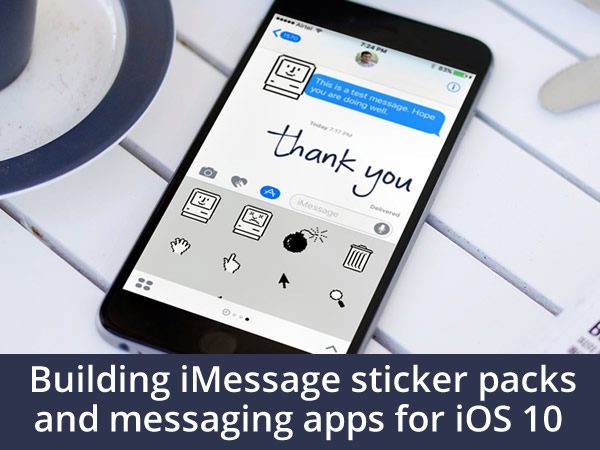
The next change comes from Apple, in the form of iOS 10, Xcode 8, and Swift 3, and we’ll be talking about what these new versions mean for you as iOS developers over the next couple of meetups.
The date for the next meetup is to be determined, but I’m aiming for early September, and the topic will be Building iMessage sticker packs and messaging apps for iOS 10. iMessage is one of the most-used iOS apps, and a lot of people seem to like adding a little flair to their communications, so the introduction of sticker packs and iMessage apps represents an opportunity for the developer looking to make a splash. Sticker packs have the added bonus of not needed any programming to develop.
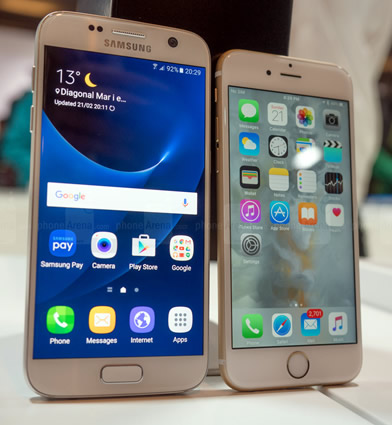
The final change is one that I’d like your opinion on. I’m thinking of expanding the subject area of our Meetup group to cover these topics:
In other words, I’m thinking about expanding our group’s coverage to while I like calling development for “Tiny shiny platforms”. Would this be something that you’d be interested in, or would you rather stick to just iOS? I’d love to hear what you think — let me know by dropping me a line at joey@joeydevilla.com!
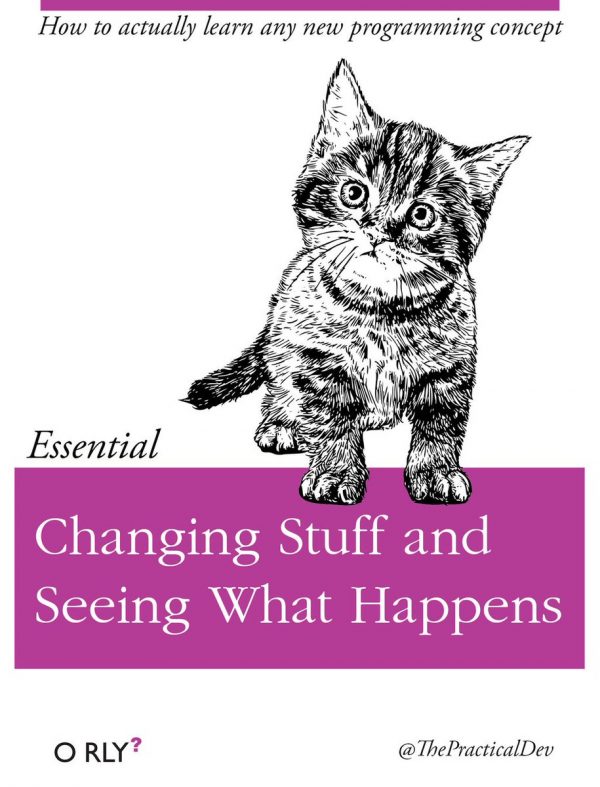
It’s how we learn best, so go forth, experiment, watch what happens, take notes — and if you can, share your knowledge. Happy hacking!
The image above comes from @ThePracticalDev’s Twitter account, and I used it in a recent article: How to work with dates and times in Swift 3, part 1: Dates, Calendars, and DateComponents.

If you’re just getting started with date and time programming in Swift 3, chances are that you probably did some Googling, found something about NSDate and its companion classes in Apple’s documentation and promptly got confused. Let me reassure you that it isn’t your fault.
For starters, a lot of the documentation out there is in Objective-C, which can throw you off if you’re not familiar with its [instance method: parameter2: parameter3:] method-calling syntax. There’s also the fact that Apple recently removed the NS prefix from Cocoa’s class names — NSDate is now just plain ol’ Date, NSCalendar is now Calendar, NSDateComponents is now DateComponents, and so on. And finally, in the move towards protocol-oriented programming, Apple has changed some classes to structs, including many of the classes for working with dates and times.
And finally, if you’re coming to Swift 3 from JavaScript, which makes do with a single object type called Date, the idea of having this set of classes just to handle dates and times looks like overkill:
Click the diagram to see it at full size.
In this series of articles, we’ll look at date and time programming in Swift 3. By its end, you’ll have a firm grasp on the topic.
Date struct represents dates and timesClick the diagram to see it at full size.
In Swift, dates and times are represented by instances of Date, which is a struct. Date is independent of any time zone, or even any calendar system. It gets this independence through the way it represents time: as a number of seconds relative to the start of the Third Millennium, January 1, 2001, 00:00:00 UTC.
The following playground code shows the various ways of creating Dates:
// To create a Date representing the current date and time,
// simply initialize a new Date.
let now = Date()
// The other initializers expect arguments of type TimeInterval,
// which is a typealias for Double.
// To create a Date a specified number of seconds before or after
// the current date and time, use the "timeIntervalSinceNow" initializer.
let fiveMinutesAgo = Date(timeIntervalSinceNow: -5 * 60)
let fiveMinutesFromNow = Date(timeIntervalSinceNow: 5 * 60)
// To create a Date relative to Swift's reference date and time,
// use the "timeIntervalSinceReferenceDate" initializer.
// The first mobile phone call was made on April 3, 1973.
// We don't know the exact time the call was made, but it happened
// sometime during business hours in New York City, in the U.S. Eastern
// Time Zone. Noon that day was 875,602,800 seconds prior to the
// reference date and time.
let firstMobileCallDate = Date(timeIntervalSinceReferenceDate: -875_602_800)
// The "Stevenote" where the iPhone was introduced started on January 9, 2007,
// 10 a.m. Pacific time, 190,058,400 seconds after the reference date and time.
let iPhoneStevenoteDate = Date(timeIntervalSinceReferenceDate: 190_058_400)
// Unix time (a.k.a. POSIX time or Epoch Time) is the way time is represented
// by Unix, Unix-like, and other operating systems. It defines time as a
// number of seconds after the Unix Epoch, January 1, 1970, 00:00:00 UTC.
// To create a Date relative to the Unix Epoch, use the
// "timeIntervalSince1970" initializer.
let oneYear = TimeInterval(60 * 60 * 24 * 365)
let newYears1971 = Date(timeIntervalSince1970: oneYear)
let newYears1969 = Date(timeIntervalSince1970: -oneYear)
// To create a Date relative to another Date, use the
// "timeInterval:Since:" initializer.
// The "Stevenote" where the iPad was introduced started on January 27, 2010,
// 10 a.m. Pacific time, 96,249,600 seconds after the start of the iPhone Stevenote
// three years earlier.
let secondsBetweeniPhoneAndiPadStevenote = TimeInterval(96_249_600)
let iPadStevenoteDate = Date(timeInterval: secondsBetweeniPhoneAndiPadStevenote,
since: iPhoneStevenoteDate)
Of course, we don’t think of dates and times in terms of seconds relative to the start of the Third Millennium, or the start of the Unix Epoch, or any other arbitrary date and time. That’s why Swift features a couple of other structs to help us make sense of Dates: Calendar and DateComponents.
Calendars give dates context, DateComponents let us assemble dates or break dates apartClick the diagram to see it at full size.
Think of the Calendar struct as a way to view Dates in a way that makes more sense to us: not as a number of seconds before or after January 1, 2001 00:00:00 UTC, but in terms of a year, month, day, hour, minute, and more.
The Calendar struct supports 16 different calendar systems, including the Gregorian calendar (a.k.a. the Western or Christian calendar), which is likely the one you use the most. Consider Swift’s reference date:
Date struct, its value is 0.In most apps, you’ll likely be using the Gregorian calendar, so Calendar‘s real use is to convert Dates into DateComponents, and DateComponents into Dates:
Click the diagram to see it at full size.
The DateComponents struct is an assembly of properties that make up a date, such as year, month, date, hour, minute, second, and so on. DateComponents instances can be used to represent either a specific point in time, or a duration of time.
Using both Calendar and DateComponents structs, we can perform these key actions:
Dates using properties such as year, month, day, hour, and minute rather than a number of second relative to a reference date, andDates, such as year, month, day, hour, and minute.Let’s start creating some Dates with the help of Calendar and DateComponents.
Date given a year, month, and day, part 1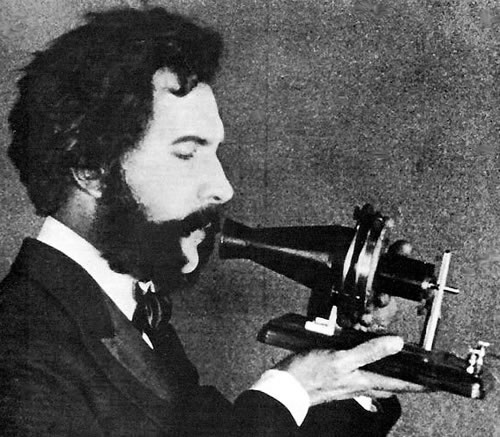
Let’s start with the first date in phone history: March 10, 1876, the day when Alexander Graham Bell made the first phone call. Create a new playground and enter or paste the code below:
// The user's calendar incorporates the user's locale and
// time zone settings, which means it's the one you'll use
// most often.
let userCalendar = Calendar.current
// March 10, 1876: The day Alexander Graham Bell
// made the first land line phone call
// ---------------------------------------------
// DateComponents' init method is very thorough, but very long,
// especially when we're providing only 3 pieces of information
let firstLandPhoneCallDateComponents = DateComponents(calendar: nil,
timeZone: nil,
era: nil,
year: 1876,
month: 3,
day: 10,
hour: nil,
minute: nil,
second: nil,
nanosecond: nil,
weekday: nil,
weekdayOrdinal: nil,
quarter: nil,
weekOfMonth: nil,
weekOfYear: nil,
yearForWeekOfYear: nil)
// With a calendar and a year, month, and day defined in
// a DateComponents struct, we can build a date
let firstLandPhoneCallDate = userCalendar.date(from: firstLandPhoneCallDateComponents)!
firstLandPhoneCallDate.timeIntervalSinceReferenceDate
In the code, we:
Calendar.DateComponents struct, firstLandPhoneCallDateComponents, providing values for the year, month, and day parameters, and nil for all the others.Calendar to create firstLandPhoneCallDate using firstLandPhoneCallDateComponents.Date.Here’s a screenshot of the playground code as seen on my computer, whose time zone is set to “US/Eastern” (UTC-5):
Click the screenshot to see it at full size.
Note the results in the sidebar at the lower right-hand corner:
firstLandPhoneCallDate‘s value corresponds to the DateComponents properties we set: March 10, 1876, 12:00 a.m..firstLandPhoneCallDate‘s internal value, contained within its timeIntervalSinceReferenceDate property, is -3,938,697,748, which indicates that Alexander Graham Bell’s inaugural phone call was made nearly 4 billion seconds prior to the start of the Third Millennium.Date given a year, month, and day, part 2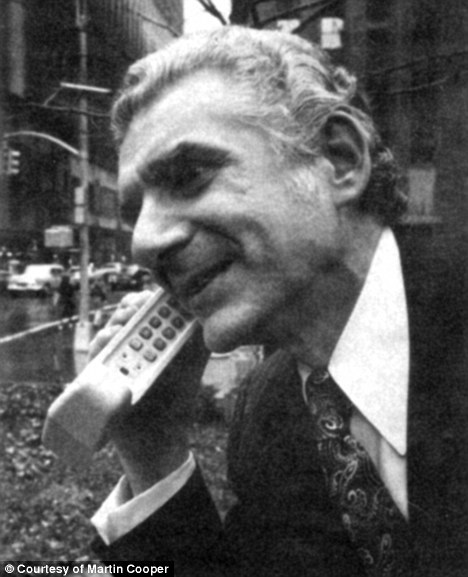
Let’s try creating another momentous date in phone history: the day when Martin Cooper made the first cellular phone call, April 3, 1973. We’ll do it differently this time, by creating a blank DateComponents struct, and then setting its year, month, and day properties. Add the following code to the code above:
// (Previous code goes here) // April 3, 1973: The day Martin Cooper // made the first cellular phone call // ------------------------------------ // This time, we'll create a blank DateComponents struct // and set its year, month, and day properties. var firstCellPhoneCallDateComponents = DateComponents() firstCellPhoneCallDateComponents.year = 1973 firstCellPhoneCallDateComponents.month = 4 firstCellPhoneCallDateComponents.day = 3 let firstCellPhoneCallDate = userCalendar.date(from: firstCellPhoneCallDateComponents)! firstCellPhoneCallDate.timeIntervalSinceReferenceDate
In the code, we:
DateComponents struct, firstCellPhoneCallDateComponents.firstCellPhoneCallDateComponents to correspond to the date April 3, 1973.Calendar to create firstCellPhoneCallDate using firstCellPhoneCallDateComponents.Date.Here’s a screenshot of the results:
Click the screenshot to see it at full size.
Date: What date does National Donut Day — the first Friday in June — fall on in 2017?Having come from Canada, the country with the world’s highest per capita donut shop concentration and the people who eat the most donuts per capita, I can assure you that National Donut Day has been a real thing since 1938. It takes place on the first Friday in June, and we can find out what date it falls on in 2017 — or any other year — through the judicious use of DateComponents properties.
Add the following code to the current playground:
// (Previous code goes here) // The first Friday in June, 2017: // National Donut Day // ------------------------------- var donutDayComponents = DateComponents() donutDayComponents.year = 2017 donutDayComponents.month = 6 // We're looking for a Friday... donutDayComponents.weekday = 6 // ...and it needs to be the first Friday of the month donutDayComponents.weekdayOrdinal = 1 let donutDayDate = userCalendar.date(from: donutDayComponents)!
You should be familiar with the year and month DayComponents properties by now, and we’re using a couple that may be new to you:
weekday: Specifies a day of the week. With the Gregorian calendar, valid values are 1 through 7, where 1 is Sunday, 2 is Monday, 3 is Tuesday, and so on. Since we’re looking for a Friday, we’ve set this value to 6.weekdayOrdinal: Specifies the order of the given weekday in the next larger specified calendar unit. Since we set weekday to 6 and set this value to 1, and since the next largest specified calendar unit was month, we’ll get the date of the first Friday of the month.If you check the value of donutDayDate in the playground’s sidebar, you should see Jun 2, 2017, 12:00 AM. If you look at a calendar, you’ll confirm that it is indeed the first Friday of June 2017.
In the spirit of the fake book cover shown above, let’s see what happens if we don’t specify the month. Comment out the following line from the code you just added…
donutDayComponents.month = 6
…so that the code now looks like this:
// The first Friday in June, 2017: // National Donut Day // ------------------------------- var donutDayComponents = DateComponents() donutDayComponents.year = 2017 //donutDayComponents.month = 6 // We're looking for a Friday... donutDayComponents.weekday = 6 // ...and it needs to be the first Friday of the month donutDayComponents.weekdayOrdinal = 1 let donutDayDate = userCalendar.date(from: donutDayComponents)!
When you run the code, you’ll see that the date for donutDayDate is now Jan 6 2017, 12:00 AM. Now that we’re specifying only a year and not a month, Swift interprets the combination of donutDayComponents.weekday = 6 and donutDayComponents.weekdayOrdinal = 1 to mean “the first Friday of the year”. If you look at a calendar, you’ll confirm that January 6, 2017 is indeed the first Friday of the year.
Date: 5:00.pm. on Thursday of the 18th week of 2017…in Tokyo.The great thing about Swift’s Calendar class is that it does its best to work with the DateComponents that you give it, and DateComponents gives you all sorts of ways to specify a date. Let’s assume for a moment that you’re in Japan and want to leave work at the ridiculously early hour of 5 p.m. and have some relaxing Suntory times, and it just happens to be the 18th week of 2017. What’s the date?
The answer comes from this code:
// (Previous code goes here) // Thursday on the 18th week of 2017 in Tokyo // ------------------------------------------ var thursday5pm18thWeek2017TokyoDateComponents = DateComponents() thursday5pm18thWeek2017TokyoDateComponents.year = 2017 thursday5pm18thWeek2017TokyoDateComponents.weekOfYear = 18 thursday5pm18thWeek2017TokyoDateComponents.weekday = 5 thursday5pm18thWeek2017TokyoDateComponents.hour = 17 thursday5pm18thWeek2017TokyoDateComponents.timeZone = TimeZone(identifier: "Asia/Tokyo")! let thursday5pm18thWeek2017TokyoDate = userCalendar.date(from: thursday5pm18thWeek2017TokyoDateComponents)!
On my system, which is in the Eastern daylight time zone (UTC-4) at the time of writing, thursday5pm18thWeek2017TokyoDate displays as May 4, 2017, 4:00 AM in my playground’s sidebar, and looking at a calendar confirms that May 4th is indeed the Thursday of the 18th month of 2017.
DateComponents from a Date, part 1Now that we’ve created some Dates using DateComponents, let’s do the reverse and extract DateComponents from given Dates. We’ll continue with our playground and use a Date we’ve already created: firstLandPhoneCallDate, which corresponds to the date of Alexander Graham Bell’s historic phone call, March 10, 1876. Here’s code that extracts the year, month, and day from this Date:
// (Previous code goes here)
// We want to extract the year, month, and day from firstLandPhoneCallDate
let alexanderGrahamBellDateComponents = userCalendar.dateComponents([.year, .month, .day],
from: firstLandPhoneCallDate)
alexanderGrahamBellDateComponents.year // 1876
alexanderGrahamBellDateComponents.month // 3
alexanderGrahamBellDateComponents.day // 10
DateComponents from a Date, part 2This time, let’s create a new Date — one that corresponds to this key date in iOS history: the “Stevenote” where the original iPhone was first announced:
If you were to ask Swift when this Stevenote took place, it would reply “190,058,400 seconds after the reference date”. For most of us, this is a meaningless figure, so we’ll extract the following DateComponents from this Date:
Here’s the code:
// (Previous code goes here)
// The "Stevenote" where the iPhone was announced took place
// 190,058,400 seconds after the start of the Third Millennium.
let iPhoneStevenoteDate = Date(timeIntervalSinceReferenceDate: 190_058_400)
// We want to extract the year, month, day, hour, and minute from this date,
// and we also want to know what day of the week and week of the year
// this date fell on.
let iPhoneStevenoteDateComponents = userCalendar.dateComponents(
[.year, .month, .day, .hour, .minute, .weekday, .weekOfYear],
from: iPhoneStevenoteDate)
iPhoneStevenoteDateComponents.year! // 2007
iPhoneStevenoteDateComponents.month! // 1
iPhoneStevenoteDateComponents.day! // 9
iPhoneStevenoteDateComponents.hour! // 13
iPhoneStevenoteDateComponents.minute! // 0
iPhoneStevenoteDateComponents.weekday! // 3 (Tuesday)
iPhoneStevenoteDateComponents.weekOfYear! // 2 (2nd week of the year)
DateComponents from a Date, part 3Let’s try it again with another key iOS date — the Stevenote where the original iPad was announced:
This time, if you were to ask Swift when this Stevenote took place, it would reply “286,308,000 seconds after the reference date”. Let’s get all the DateComponents for this date:
// (Previous code goes here)
// The "Stevenote" where the original iPad was announced took place
// 286,308,00 seconds after the start of the Third Millennium.
let iPadSteveNoteDate = Date(timeIntervalSinceReferenceDate: 286_308_000)
// We want to extract ALL the DateComponents.
let iPadSteveNoteDateComponents = userCalendar.dateComponents([.calendar,
.day,
.era,
.hour,
.minute,
.month,
.nanosecond,
.quarter,
.second,
.timeZone,
.weekday,
.weekdayOrdinal,
.weekOfMonth,
.weekOfYear,
.year,
.yearForWeekOfYear],
from: iPadSteveNoteDate)
iPadSteveNoteDateComponents.calendar?.identifier // gregorian
iPadSteveNoteDateComponents.day! // 27
iPadSteveNoteDateComponents.era! // 1
iPadSteveNoteDateComponents.hour! // 13
iPadSteveNoteDateComponents.minute! // 0
iPadSteveNoteDateComponents.month! // 1
iPadSteveNoteDateComponents.nanosecond! // 0
iPadSteveNoteDateComponents.quarter! // 0
iPadSteveNoteDateComponents.second! // 0
iPadSteveNoteDateComponents.timeZone! // Eastern time zone
iPadSteveNoteDateComponents.weekday! // 4 (Wednesday)
iPadSteveNoteDateComponents.weekdayOrdinal! // 4 (4th Wednesday in the month)
iPadSteveNoteDateComponents.weekOfMonth! // 5 (5th week of the month)
iPadSteveNoteDateComponents.weekOfYear! // 5 (5th week of the year)
iPadSteveNoteDateComponents.year! // 2010
iPadSteveNoteDateComponents.yearForWeekOfYear! // 2010
Let’s take a look at each DateComponents property and what it represents:
| Property | Description |
|---|---|
calendar |
The calendar system for the date represented by this set of DateComponents. We got these DateComponents by converting a Date using a Gregorian Calendar, so in this case, this value is gregorian. |
day |
The day number of this particular date and time. For January 27, 2010, 18:00:00 UTC, this value is 27. |
era |
The era for this particular date, which depends on the date’s calendar system. In this case, we’re using the Gregorian calendar, which has two eras:
|
hour |
The hour number of this particular date and time. For January 27, 2010, 18:00:00 UTC, this value is 13, because in my time zone, 18:00:00 UTC is 13:00:00. |
minute |
The minute number of this particular date and time. For January 27, 2010, 18:00:00 UTC, this value is 0. |
month |
The month number of this particular date and time. For January 27, 2010, 18:00:00 UTC, this value is 1. |
nanosecond |
The nanosecond number of this particular date and time. For January 27, 2010, 18:00:00 UTC, this value is 0. |
quarter |
The quarter number of this particular date and time. January 27, 2010, 18:00:00 UTC, is in the first quarter of the year, so this value is 0. |
second |
The second number of this particular date and time. For January 27, 2010, 18:00:00 UTC, this value is 0. |
timeZone |
The time zone of this particular date and time. I’m in the UTC-5 time zone (US Eastern), so this value is set to that time zone. |
weekday |
The day of the week of this particular date and time. In the Gregorian calendar, Sunday is 1, Monday is 2, Tuesday is 3, and so on. January 27, 2010, was a Wednesday, so this value is 4. |
weekdayOrdinal |
The position of the weekday within the next larger specified calendar unit, which in this case is a month. So this specifies nth weekday of the given month. Jauary 27, 2010 was on the 4th Wednesday of the month, so this value is 4. |
weekOfMonth |
The week of the month of this particular date and time. January 27, 2010 fell on the 5th week of January 2010, so this value is 5. |
weekOfYear |
The week of the year of this particular date and time. January 27, 2010 fell on the 5th week of 2010, so this value is 5. |
year |
The year number of this particular date and time. For January 27, 2010, 18:00:00 UTC, this value is 2010. |
yearForWeekOfYear |
Oh wow, this is so hard to explain that I’ll leave it to Apple’s docs. |
Here’s the playground containing all the code we just worked with:
// The user's calendar incorporates the user's locale and
// time zone settings, which means it's the one you'll use
// most often.
let userCalendar = Calendar.current
// March 10, 1876: The day Alexander Graham Bell
// made the first land line phone call
// ---------------------------------------------
// DateComponents' init method is very thorough, but very long,
// especially when we're providing only 3 pieces of information
let firstLandPhoneCallDateComponents = DateComponents(calendar: nil,
timeZone: nil,
era: nil,
year: 1876,
month: 3,
day: 10,
hour: nil,
minute: nil,
second: nil,
nanosecond: nil,
weekday: nil,
weekdayOrdinal: nil,
quarter: nil,
weekOfMonth: nil,
weekOfYear: nil,
yearForWeekOfYear: nil)
// With a calendar and a year, month, and day defined in
// a DateComponents struct, we can build a date
let firstLandPhoneCallDate = userCalendar.date(from: firstLandPhoneCallDateComponents)!
firstLandPhoneCallDate.timeIntervalSinceReferenceDate
// April 3, 1973: The day Martin Cooper
// made the first cellular phone call
// ------------------------------------
// This time, we'll create a blank DateComponents struct
// and set its year, month, and day properties.
var firstCellPhoneCallDateComponents = DateComponents()
firstCellPhoneCallDateComponents.year = 1973
firstCellPhoneCallDateComponents.month = 4
firstCellPhoneCallDateComponents.day = 3
let firstCellPhoneCallDate = userCalendar.date(from: firstCellPhoneCallDateComponents)!
firstCellPhoneCallDate.timeIntervalSinceReferenceDate
// The first Friday in June, 2017:
// National Donut Day
// -------------------------------
var donutDayComponents = DateComponents()
donutDayComponents.year = 2017
donutDayComponents.month = 6
// We're looking for a Friday...
donutDayComponents.weekday = 6
// ...and it needs to be the first Friday of the month
donutDayComponents.weekdayOrdinal = 1
let donutDayDate = userCalendar.date(from: donutDayComponents)!
// Thursday on the 18th week of 2017 in Tokyo
// ------------------------------------------
var thursday5pm18thWeek2017TokyoDateComponents = DateComponents()
thursday5pm18thWeek2017TokyoDateComponents.year = 2017
thursday5pm18thWeek2017TokyoDateComponents.weekOfYear = 18
thursday5pm18thWeek2017TokyoDateComponents.weekday = 5
thursday5pm18thWeek2017TokyoDateComponents.hour = 17
thursday5pm18thWeek2017TokyoDateComponents.timeZone = TimeZone(identifier: "Asia/Tokyo")!
let thursday5pm18thWeek2017TokyoDate = userCalendar.date(from: thursday5pm18thWeek2017TokyoDateComponents)!
var tokyoCalendar = Calendar(identifier: .ethiopicAmeteAlem)
tokyoCalendar.timeZone = TimeZone(identifier: "Asia/Tokyo")!
firstLandPhoneCallDate.timeIntervalSinceReferenceDate
// We want to extract the year, month, and day from firstLandPhoneCallDate
let alexanderGrahamBellDateComponents = userCalendar.dateComponents([.year, .month, .day],
from: firstLandPhoneCallDate)
alexanderGrahamBellDateComponents.year // 1876
alexanderGrahamBellDateComponents.month // 3
alexanderGrahamBellDateComponents.day // 10
// The "Stevenote" where the original iPhone was announced took place
// 190,058,400 seconds after the start of the Third Millennium.
let iPhoneStevenoteDate = Date(timeIntervalSinceReferenceDate: 190_058_400)
// We want to extract the year, month, day, hour, and minute from this date,
// and we also want to know what day of the week and week of the year
// this date fell on.
let iPhoneStevenoteDateComponents = userCalendar.dateComponents(
[.year, .month, .day, .hour, .minute, .weekday, .weekOfYear],
from: iPhoneStevenoteDate)
iPhoneStevenoteDateComponents.year! // 2007
iPhoneStevenoteDateComponents.month! // 1
iPhoneStevenoteDateComponents.day! // 9
iPhoneStevenoteDateComponents.hour! // 13
iPhoneStevenoteDateComponents.minute! // 0
iPhoneStevenoteDateComponents.weekday! // 3 (Tuesday)
iPhoneStevenoteDateComponents.weekOfYear! // 2 (2nd week of the year)
// The "Stevenote" where the original iPad was announced took place
// 286,308,00 seconds after the start of the Third Millennium.
let iPadSteveNoteDate = Date(timeIntervalSinceReferenceDate: 286_308_000)
// We want to extract ALL the DateComponents.
let iPadSteveNoteDateComponents = userCalendar.dateComponents([.calendar,
.day,
.era,
.hour,
.minute,
.month,
.nanosecond,
.quarter,
.second,
.timeZone,
.weekday,
.weekdayOrdinal,
.weekOfMonth,
.weekOfYear,
.year,
.yearForWeekOfYear],
from: iPadSteveNoteDate)
iPadSteveNoteDateComponents.calendar?.identifier // gregorian
iPadSteveNoteDateComponents.day! // 27
iPadSteveNoteDateComponents.era! // 1
iPadSteveNoteDateComponents.hour! // 13
iPadSteveNoteDateComponents.minute! // 0
iPadSteveNoteDateComponents.month! // 1
iPadSteveNoteDateComponents.nanosecond! // 0
iPadSteveNoteDateComponents.quarter! // 0
iPadSteveNoteDateComponents.second! // 0
iPadSteveNoteDateComponents.timeZone! // Eastern time zone
iPadSteveNoteDateComponents.weekday! // 4 (Wednesday)
iPadSteveNoteDateComponents.weekdayOrdinal! // 4 (4th Wednesday in the month)
iPadSteveNoteDateComponents.weekOfMonth! // 5 (5th week of the month)
iPadSteveNoteDateComponents.weekOfYear! // 5 (5th week of the year)
iPadSteveNoteDateComponents.year! // 2010
iPadSteveNoteDateComponents.yearForWeekOfYear! // 2010
In the next installment, we’ll look at converting Dates to Strings, and vice versa.

This one goes out to all the front-end and interface designers and developers out there.